Having spent countless weekends exploring Arkansas over the past few years, I’m often asked what makes this state worth visiting. Like many overlooked destinations, Arkansas isn’t easy to sum up in a few words – it’s a place where Ozark mountain trails meet Delta lowlands, and where small-town squares sit just hours from urban centers.
“Arkansas is one of those states that surprises people,” says Sarah Mitchell, a local tour guide who’s been showing visitors around for over a decade. “Most folks don’t realize we have everything from crystal-filled caves to historic hot springs, and some of the best hiking trails you’ll find in the South.”
While you could spend months discovering all of Arkansas’s hidden corners, you don’t need a lifetime to appreciate what makes this state special. To help you plan your visit, here are 21 of the best places that showcase what the Natural State has to offer.
- Best tourist destination: Hot Springs National Park
- Underrated hidden gem: Mount Magazine State Park
- Best for families: Crystal Bridges Museum
- Best for couples: Garvan Woodland Gardens
- Best for solo travelers: Buffalo National River
- Best outdoor adventure: Ozark National Forest
Hot Springs National Park, Arkansas
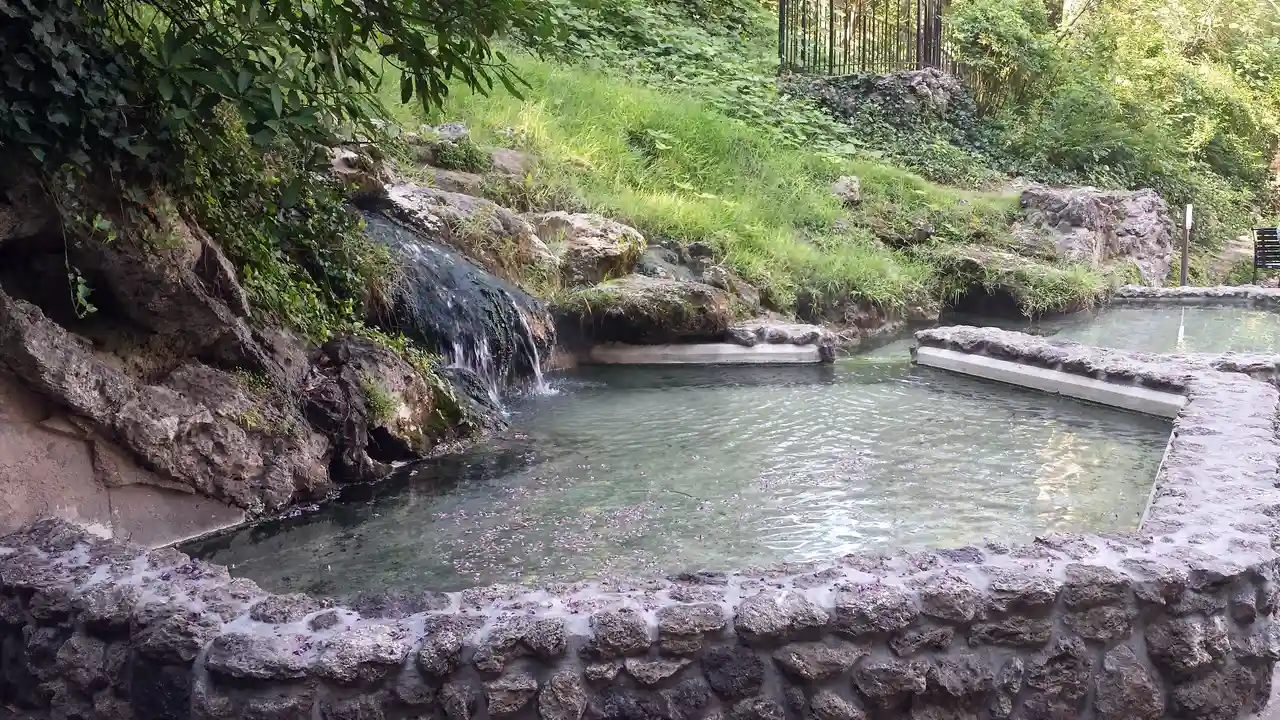
Located in central Arkansas, Hot Springs National Park stands as America’s oldest national park service site. While other national parks might showcase dramatic mountains or sweeping canyons, this urban park tells a different story through its historic bathhouses and natural thermal springs. The park’s Bathhouse Row, with its eight preserved buildings from the 1800s, recalls a time when people traveled from all over to “take the waters” for their supposed healing properties. You can still fill up your water bottles from the public springs today, join locals who make their daily trips to collect the mineral-rich water, or treat yourself to a traditional bath experience at one of the operational bathhouses. Because of its location within the city of Hot Springs, you’ll find yourself in the unique position of exploring both nature and history without ever leaving the sidewalk.
Crystal Bridges Museum of American Art, Bentonville
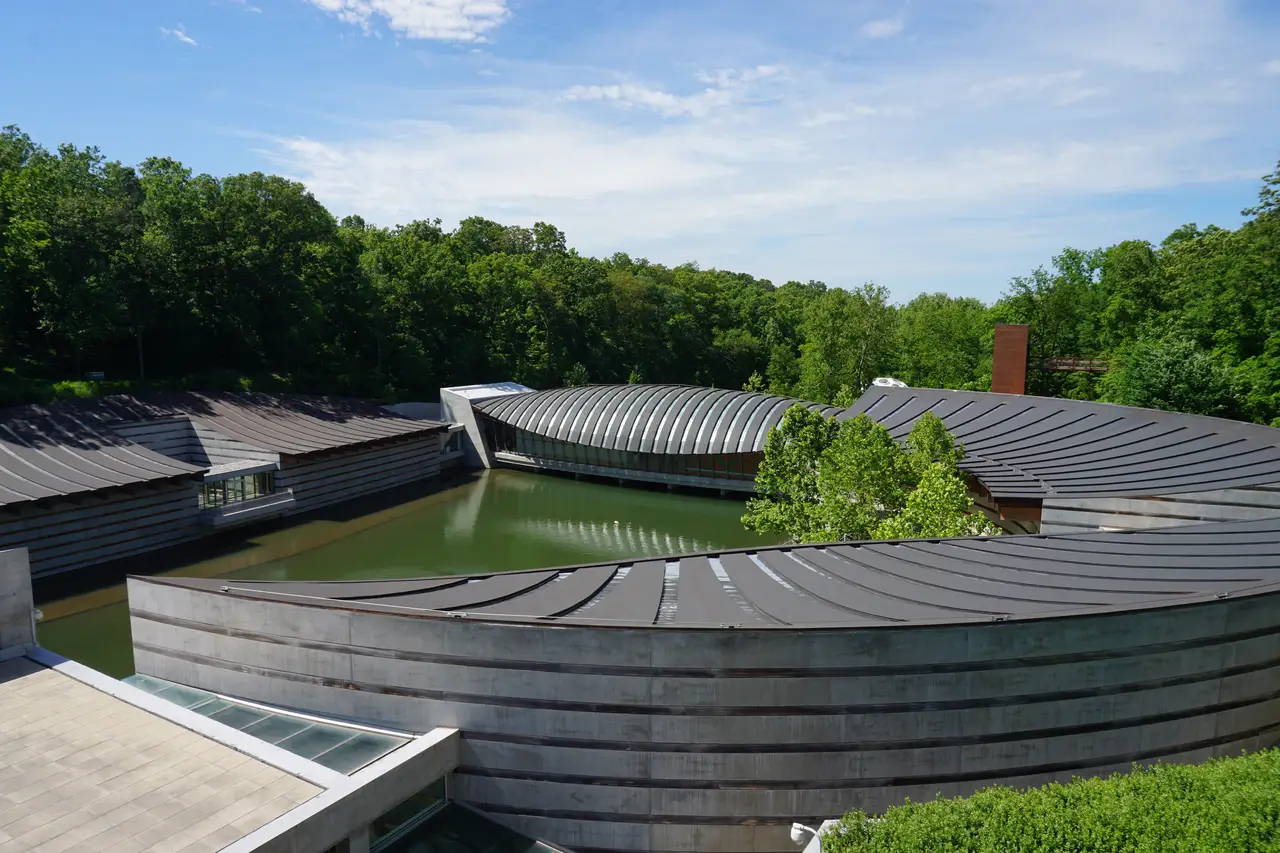
Located in the northwest corner of Arkansas, the Crystal Bridges Museum of American Art has turned Bentonville into an unexpected cultural destination. Unlike most major art museums housed in big cities, this one sits on 120 acres of Ozark forest, where art and nature blend seamlessly together. The museum, founded by Walmart heiress Alice Walton, showcases five centuries of American art, from colonial times to today. What makes it even more special is that admission is completely free, thanks to Walmart’s sponsorship. As you walk through the distinctive curved buildings that span spring-fed ponds, you’ll find works by Andy Warhol, Norman Rockwell, and Georgia O’Keeffe sharing space with trails dotted with outdoor sculptures.
Mount Magazine State Park
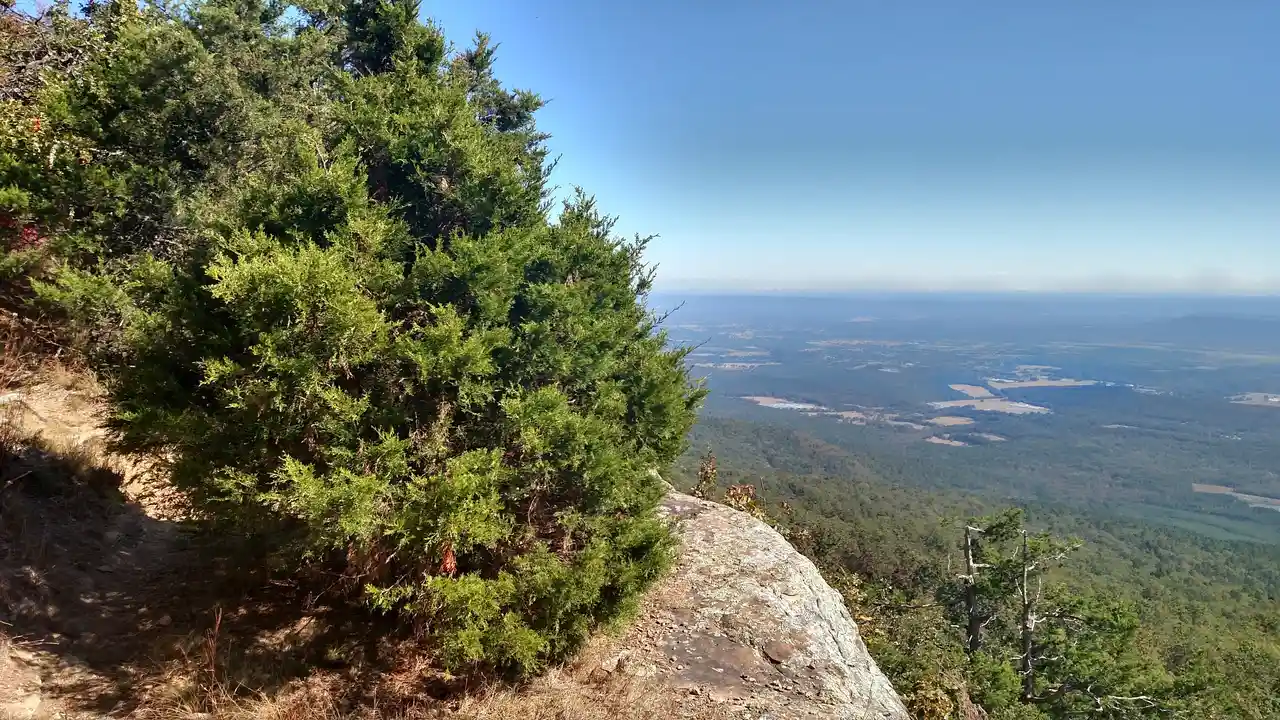
Ever hiked to the highest point in Arkansas? You’ll find it at Mount Magazine State Park, where the elevation reaches an impressive 2,753 feet above sea level. The park’s crown jewel is the Lodge at Mount Magazine, perched on the mountain’s south bluff, offering sweeping views of the Petit Jean River Valley and Blue Mountain Lake. Visitors can explore 14 miles of trails for hiking and mountain biking, watch hang gliders soar from the mountain’s edge, or spot some of the 94 butterfly species that call this place home. During spring and fall, the surrounding Ozark National Forest creates a colorful backdrop that makes you feel like you’re standing on top of the world.
Ozark National Forest
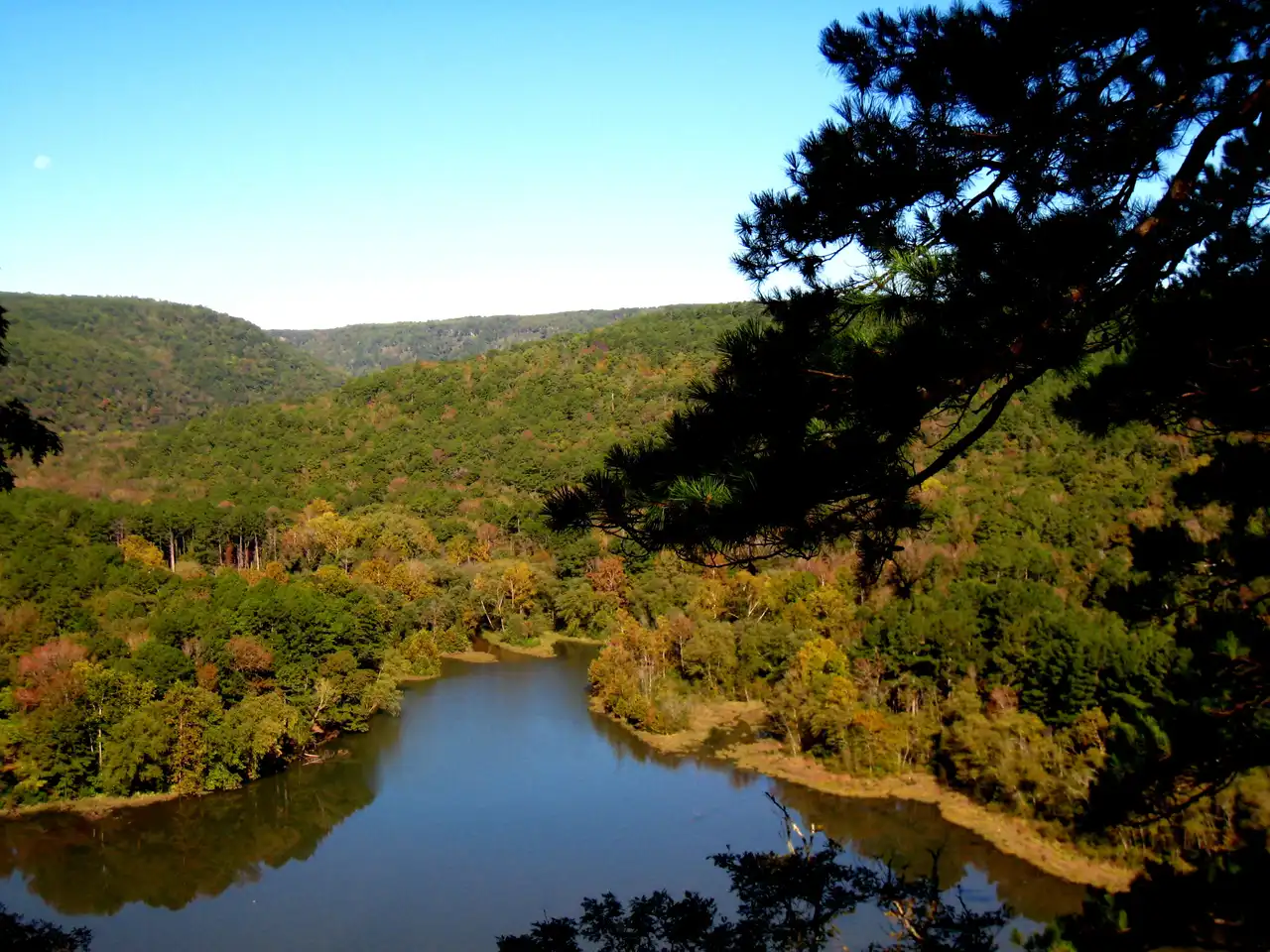
If you’re looking to experience Arkansas’s natural beauty, head straight to Ozark National Forest. Spread across 1.2 million acres in the northern part of the state, this vast woodland paradise offers more than 400 miles of hiking trails, sparkling waterfalls, and towering limestone bluffs. The forest includes several popular spots like Mount Magazine (Arkansas’s highest point), the scenic Mulberry River, and numerous campgrounds where you can spend the night under a canopy of stars.
Little Rock Central High School National Historic Site

Little Rock Central High School stands as a powerful reminder of the Civil Rights Movement in America. Unlike many historic sites that feel distant from modern life, this active high school continues to educate students while telling the story of the Little Rock Nine – the brave African American students who faced angry mobs to attend classes in 1957. Walk the same paths these students took, and you’ll feel the weight of history with every step. Because of its role in school integration, the site now includes a visitor center where rangers share personal accounts and artifacts from that pivotal time. You’ll find preserved classrooms, photographs, and interactive exhibits that help connect today’s visitors with this crucial chapter in American history.
Blanchard Springs Caverns
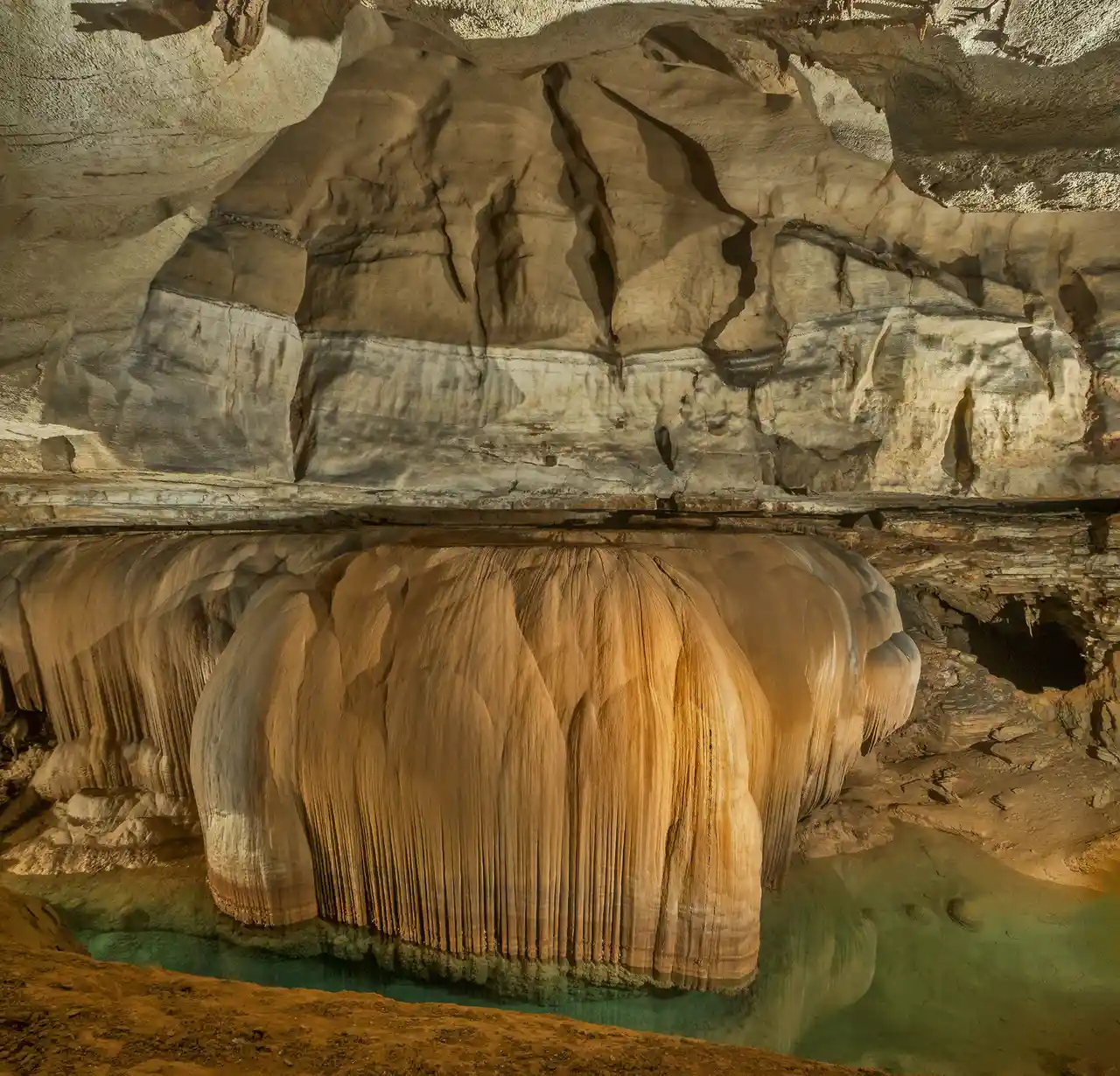
If you’re curious about what lies beneath Arkansas’s hills, you need to visit Blanchard Springs Caverns. Located in the Ozark National Forest, these impressive limestone caves feature three distinct levels of underground passages filled with natural formations like stalactites, stalagmites, and flowstones. You can take guided tours through the well-lit passages, where knowledgeable rangers explain how water shaped these underground wonders over millions of years.
Buffalo National River
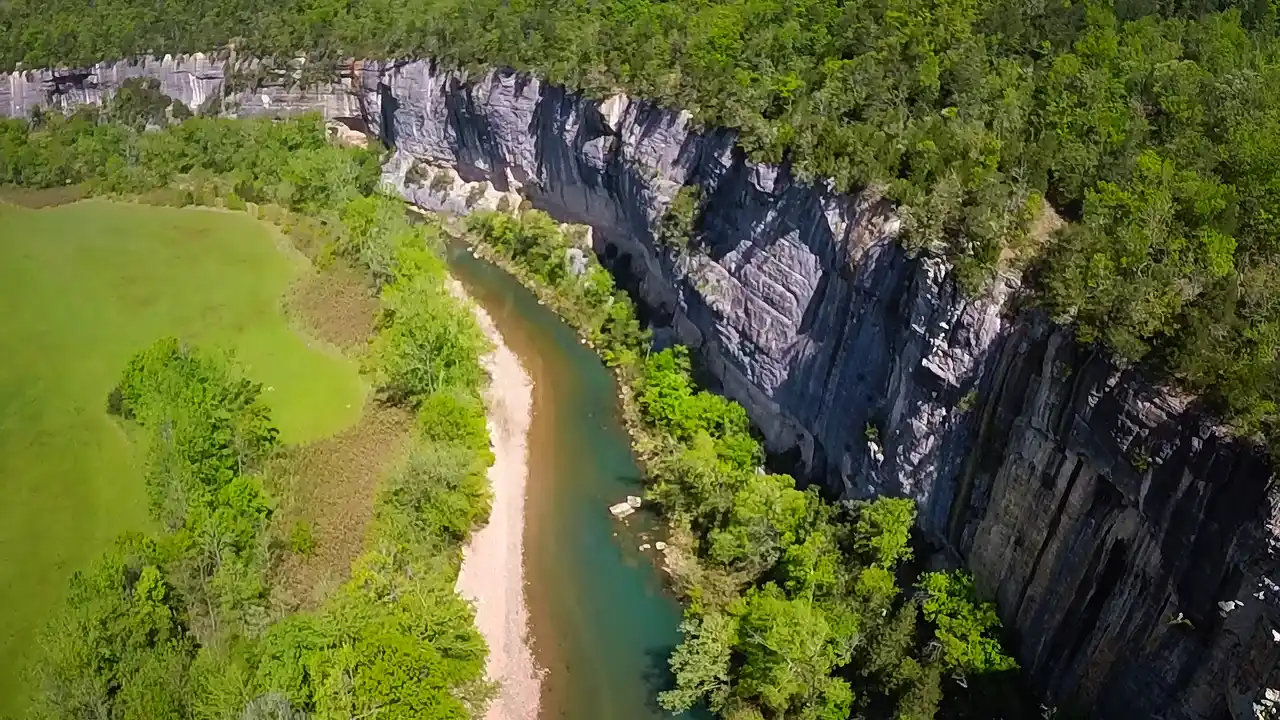
Explore one of America’s last undammed rivers when you visit the Buffalo National River in Arkansas. This 135-mile waterway flows freely through towering limestone bluffs and dense Ozark forests, offering countless spots for swimming, hiking, and wildlife watching. Jump in a canoe or kayak to paddle past dramatic rock formations and hidden caves, or grab your hiking boots and trek along over 100 miles of maintained trails. For a memorable overnight stay, set up camp at one of the riverside campgrounds where you might spot elk grazing at dawn or hear whip-poor-wills calling at dusk.
Thorncrown Chapel, Eureka Springs
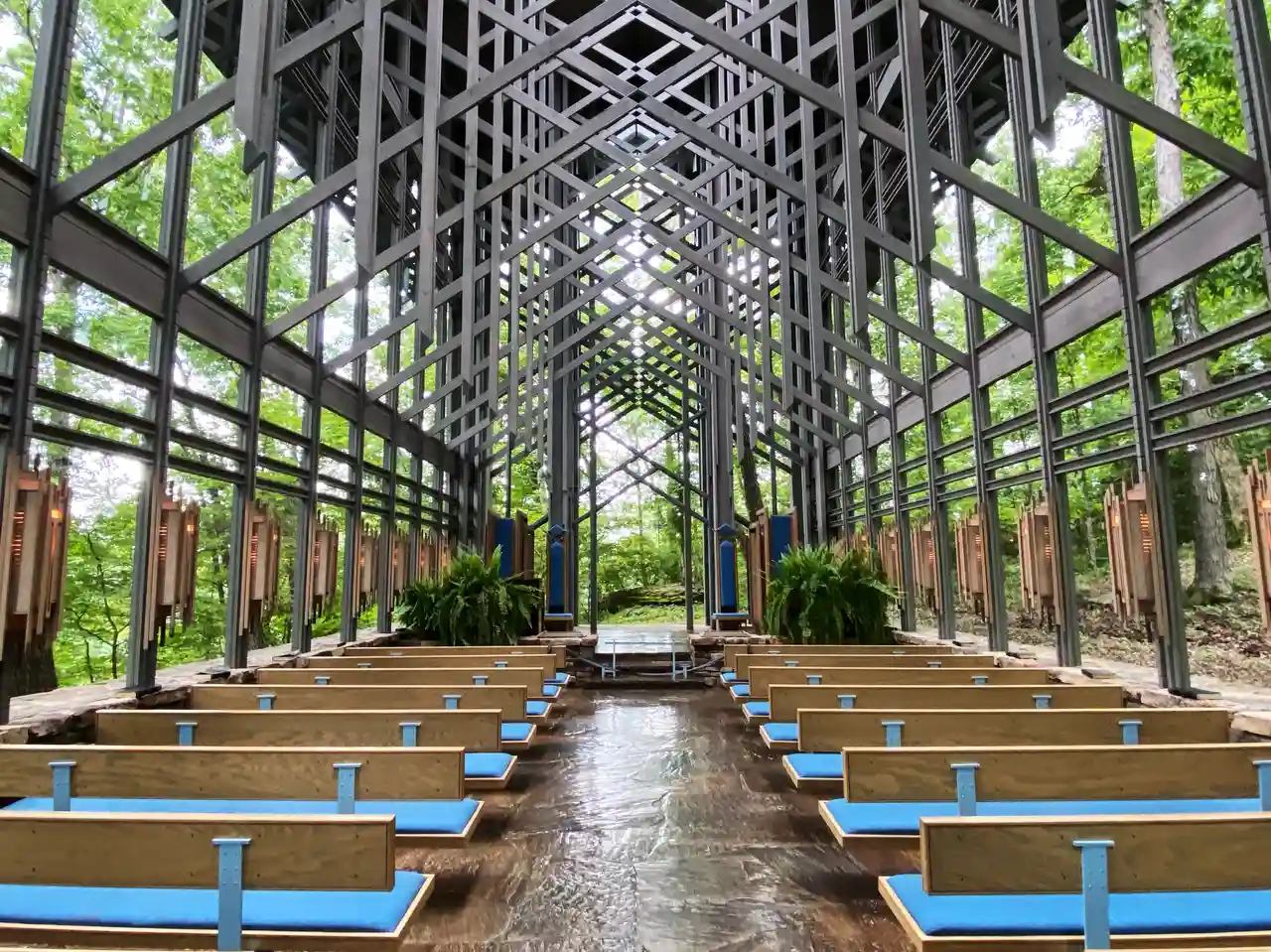
Hidden in the woods of Eureka Springs sits Thorncrown Chapel, a glass church I first visited on a quiet autumn morning in 2018. This 48-foot tall sanctuary rises from the Ozark forest floor like a geometric dream, with over 6,000 square feet of glass between its pine beams. Natural light pours through the glass walls and ceiling, creating ever-changing patterns as the sun moves across the sky. The chapel’s glass design makes it feel as if you’re sitting right in the middle of the forest, with the surrounding trees and wildlife visible from every angle. Designed by E. Fay Jones in 1980, this peaceful retreat has become one of Arkansas’s most photographed buildings, drawing visitors who come to sit in its wooden pews and take in the seamless blend of architecture and nature.
Devils Den State Park
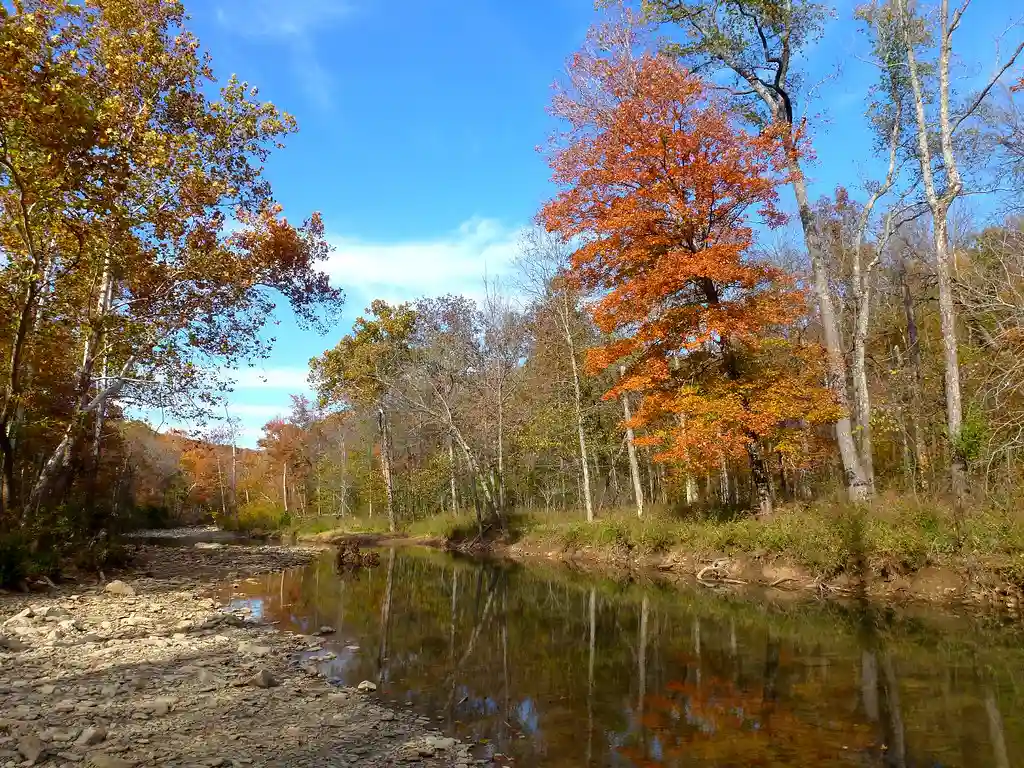
Devils Den State Park is one of those places that reminds me why Arkansas earned its nickname as The Natural State. This 2,500-acre park, carved into the Boston Mountains by water and time, pulls in visitors with its network of caves, rock formations, and hiking trails that weave through dense Ozark forest. The CCC-built dam and bridges from the 1930s add character to the landscape, while the 13-mile Butterfield Trail takes you past the same rocky outcrops that sheltered outlaws during the Civil War. It’s not just a summer destination either – the park comes alive in different ways across all seasons, from spring wildflower displays to fall foliage that turns the valley into a patchwork of colors.
Interesting Fact:
Devil’s Den State Park’s rugged landscape and hidden caves were once used as hideouts by outlaws and bandits during the Civil War era, making it a hotspot for fascinating local history and lore. The park’s unique rock formations were actually crafted by the Civilian Conservation Corps (CCC) in the 1930s, with workers hand-cutting massive sandstone blocks to build the park’s iconic structures that still stand today.
Crater of Diamonds State Park
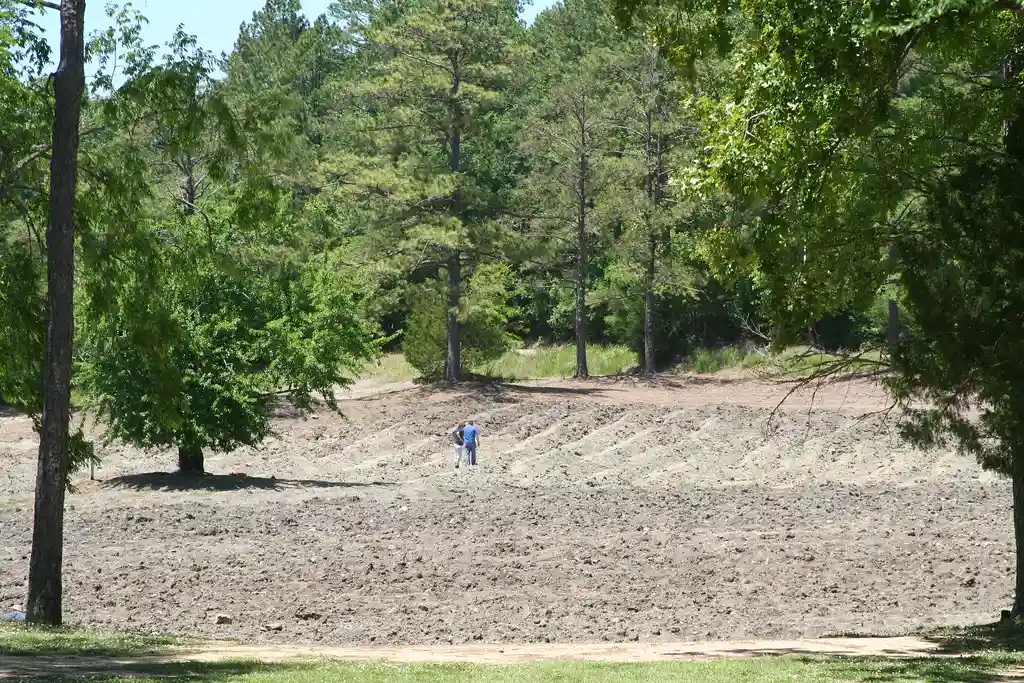
Of all the unique places I’ve explored in Arkansas, Crater of Diamonds State Park stands out as something truly special. This 37.5-acre field is the world’s only diamond-producing site open to the public, where visitors can dig for real diamonds and keep whatever they find. It’s not just a typical park visit – you’ll see people armed with shovels, buckets, and screens, all hoping to unearth their own sparkling treasure in the plowed soil. While finding a diamond isn’t guaranteed, the thrill of the hunt and the knowledge that over 75,000 diamonds have been discovered here since 1906 keeps everyone motivated. Between digging sessions, you can cool off at the water park or set up camp under the stars, making it a perfect spot for both adventure seekers and families looking for something different.
Lake Ouachita
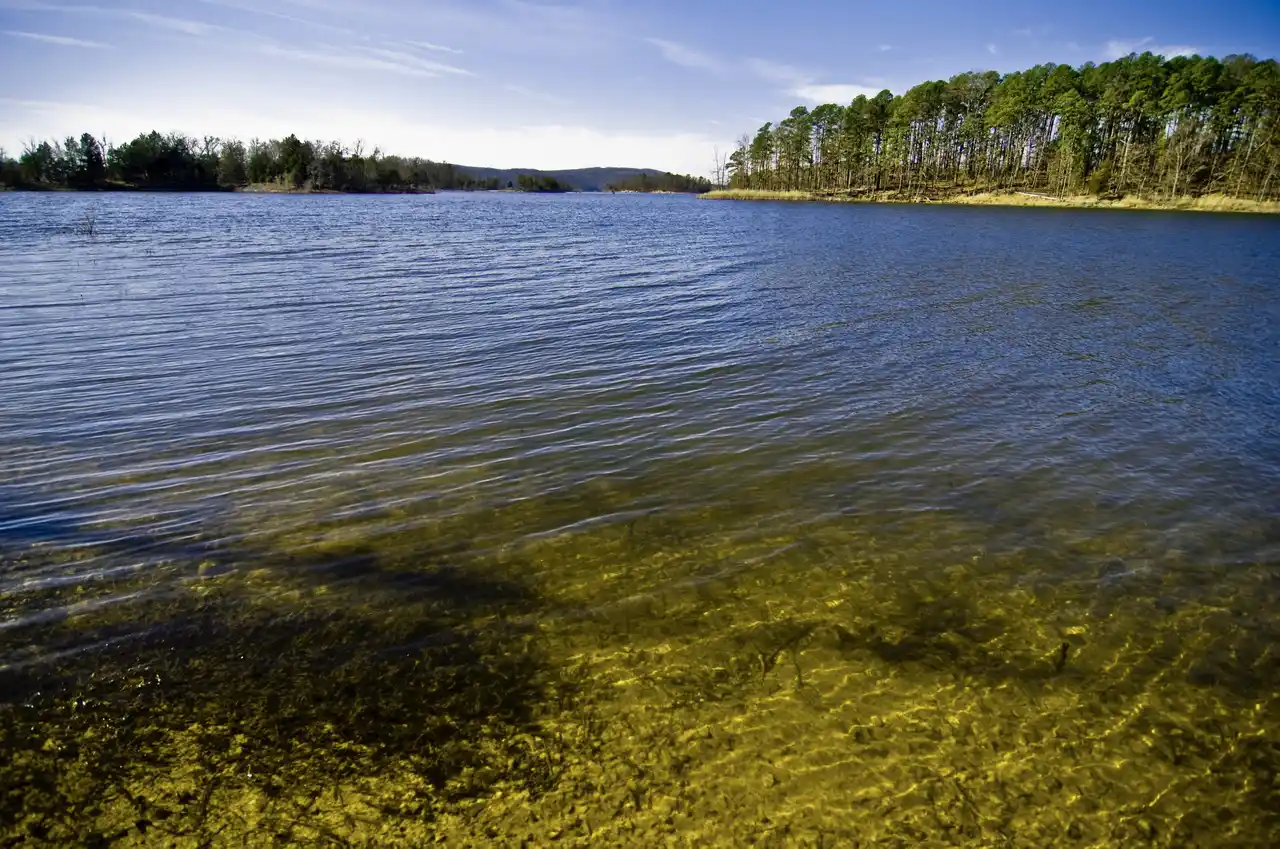
Lake Ouachita stands out as Arkansas’s crown jewel when it comes to outdoor recreation. This 40,000-acre reservoir, surrounded by the Ouachita National Forest, draws visitors looking to escape into nature without venturing too far from civilization. With more than 200 islands scattered across its crystal-clear waters, it’s a paradise for houseboaters, anglers, and scuba divers who come to explore the underwater forests and rock formations. While some folks stick to the developed marinas and campgrounds, the real magic happens when you venture out to the secluded coves and untouched shoreline that make up most of the lake’s 975 miles of coastline. It’s not your typical lake experience – the clean, uncrowded waters and complete lack of lakefront development make it feel more like you’re exploring a pristine wilderness than a man-made reservoir.
Petit Jean State Park
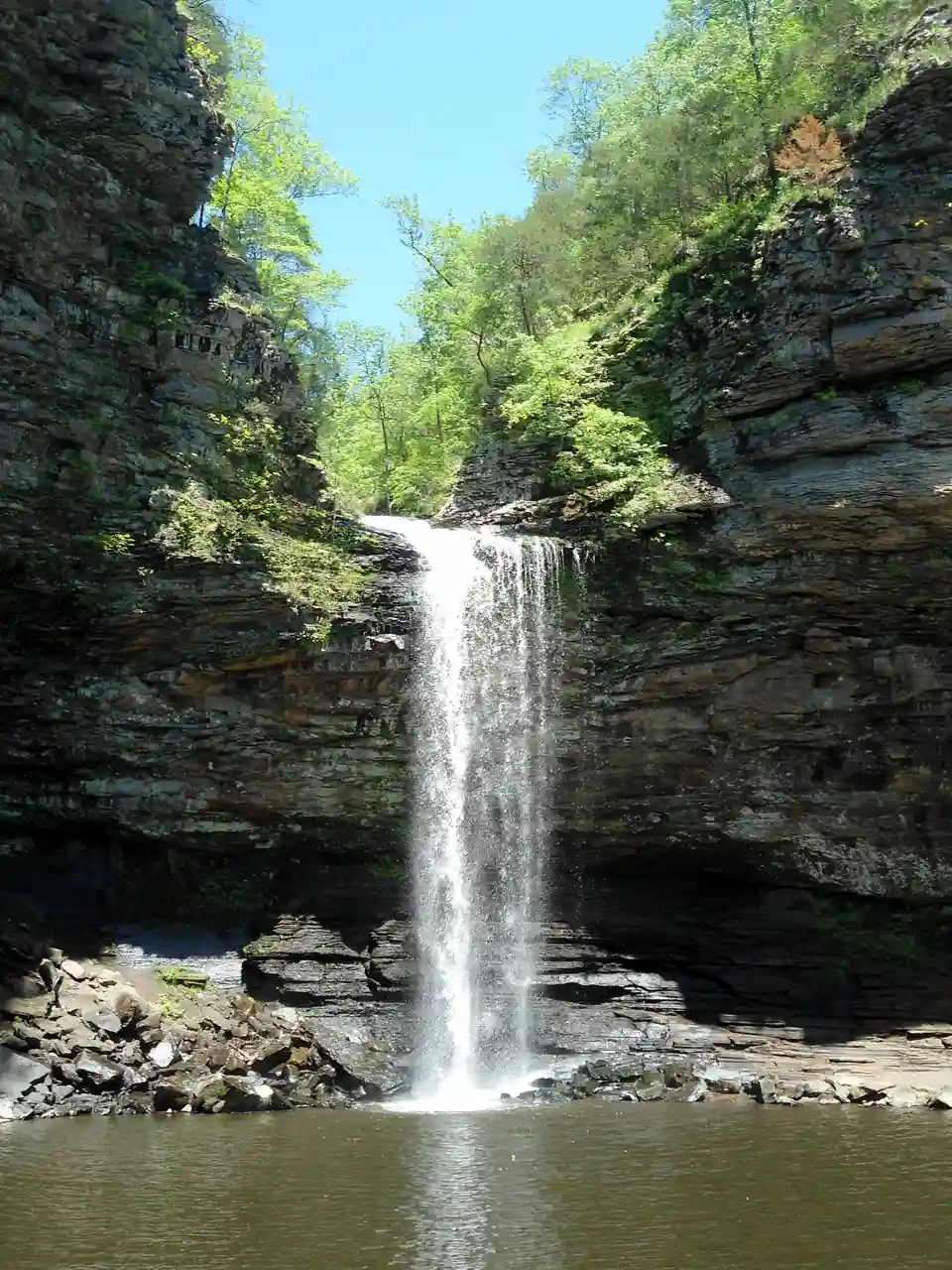
Step back in time at Petit Jean State Park, Arkansas’s first-ever state park nestled in the heart of the Ozarks. The park’s main attraction is Cedar Falls, a 95-foot waterfall that tumbles down into a rocky canyon, creating a perfect backdrop for photos. You can explore over 20 miles of hiking trails that wind through dense forests and along rocky bluffs, with the Cedar Falls Trail being a local favorite. For overnight stays, book a room at historic Mather Lodge, perched right on the edge of Cedar Creek Canyon, where you can wake up to panoramic views of the Arkansas River Valley below.
Arkansas River Trail, Little Rock
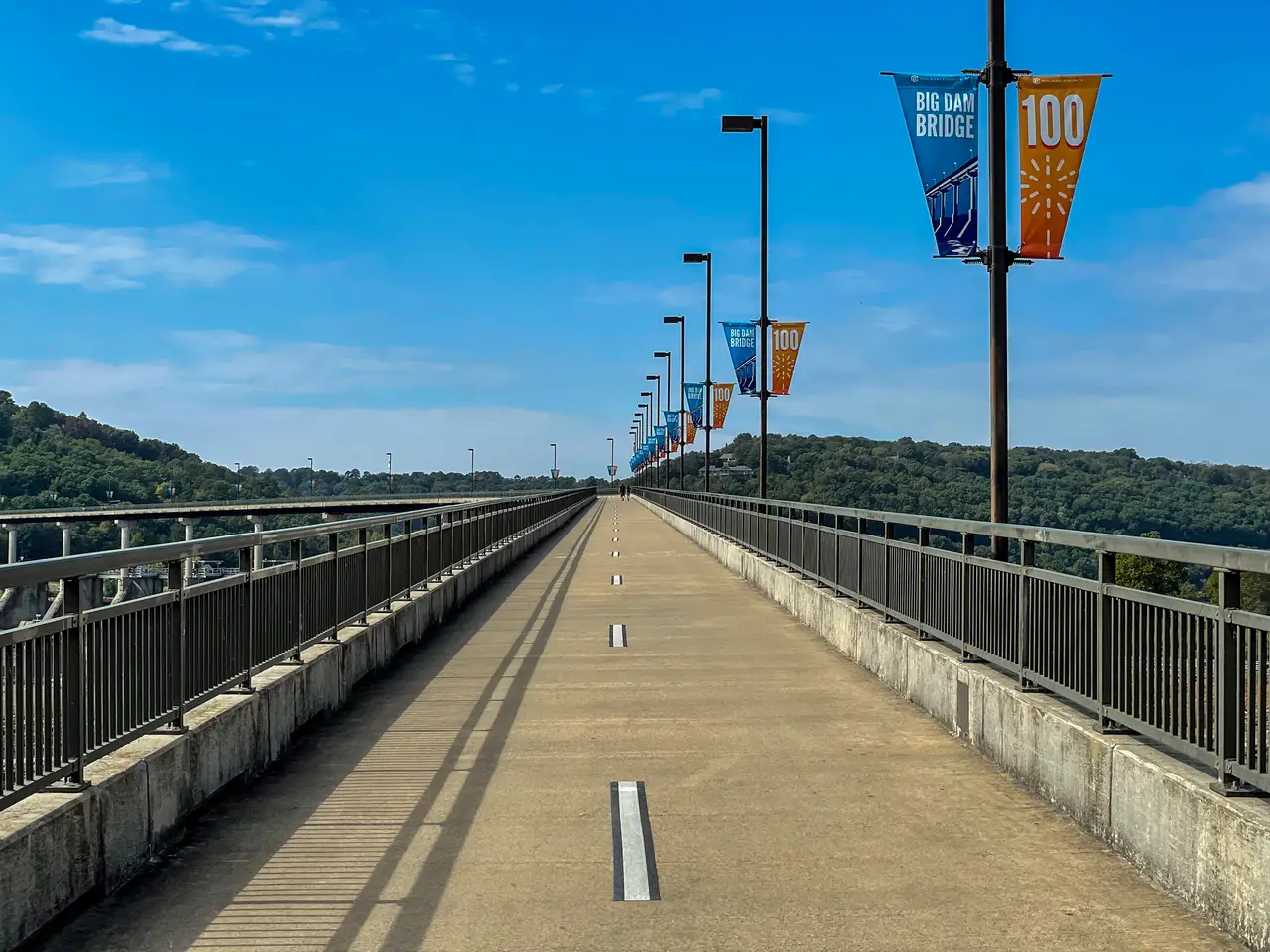
The Arkansas River Trail in Little Rock stands out as one of the city’s best outdoor spots. Running along both sides of the Arkansas River, this 17-mile loop connects downtown Little Rock and North Little Rock, taking you past local landmarks, scenic riverfront parks, and natural areas. The paved trail system includes four pedestrian bridges and offers plenty of spots to stop and watch boats cruise down the river or enjoy a picnic with skyline views.
Garvan Woodland Gardens, Hot Springs
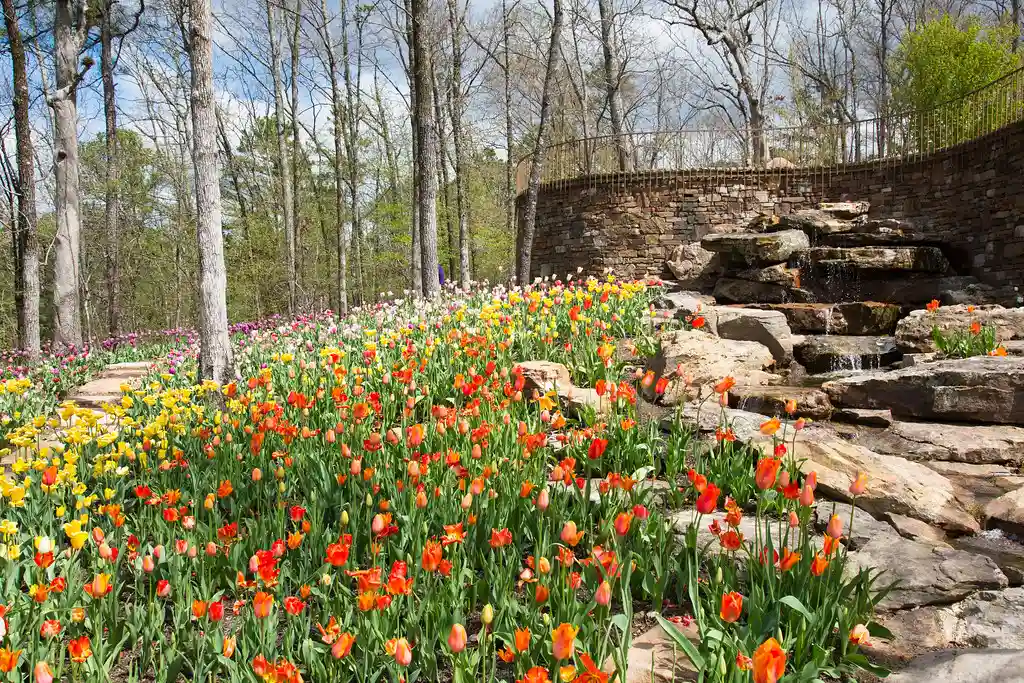
Have you ever wandered through a living work of art? That’s what you’ll find at Garvan Woodland Gardens, a 210-acre botanical paradise nestled in the heart of Hot Springs. The gardens showcase Arkansas’s natural beauty at its finest, with winding paths that lead you through forests filled with native plants and flowers. Kids especially love the whimsical treehouse that seems to float among the branches, while couples often find themselves drawn to the peaceful Japanese garden with its koi-filled pools. From March to May, thousands of tulips paint the landscape in bright colors, and during winter evenings, the gardens transform into a wonderland of holiday lights that draws visitors from across the state.
Old State House Museum, Little Rock
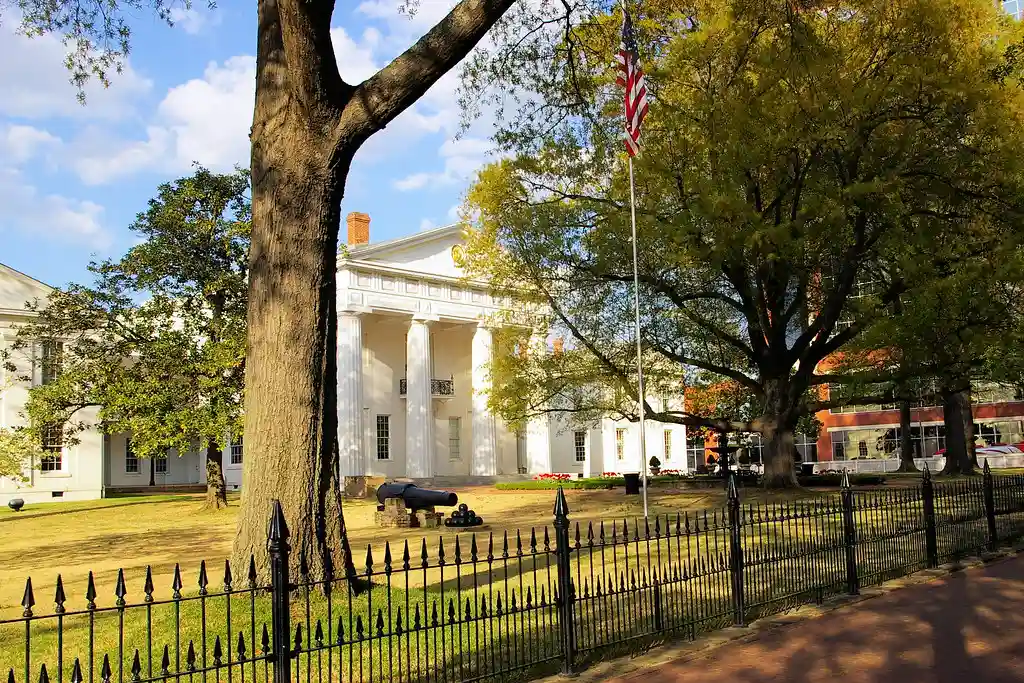
History buffs and architecture enthusiasts come to the Old State House Museum in Little Rock to explore Arkansas’s first state capitol building, but this Greek Revival landmark offers much more than political history. The museum houses collections that tell the story of Arkansas life, from Civil War artifacts to vintage fashions, while its well-preserved halls have witnessed everything from constitutional conventions to knife fights between legislators. While many visit to see the restored legislative chambers and learn about the state’s political past, you can also find rotating exhibits about Arkansas culture, music, and daily life throughout different eras. The museum’s free admission and regular educational programs make it an essential stop for anyone wanting to understand the Natural State’s journey from territory to modern-day Arkansas.
Mount Nebo State Park

Perched atop a plateau in west-central Arkansas is Mount Nebo State Park, rising 1,350 feet above the Arkansas River Valley. Like many state parks in the Natural State, Mount Nebo offers hiking trails and camping spots, but what sets it apart is its unique history as a resort destination from the 1800s. Take a drive up the winding road to the summit, and you’ll see why Victorian-era travelers made the journey by horse and buggy to escape the summer heat. The park still maintains remnants of those bygone days, including rustic cabins built by the Civilian Conservation Corps in the 1930s. Thanks to Mount Nebo’s location and elevation, visitors get clear views of the surrounding valley in all directions, making it one of the few places in Arkansas where you can watch both sunrise and sunset from the same mountain.
Lake Catherine State Park
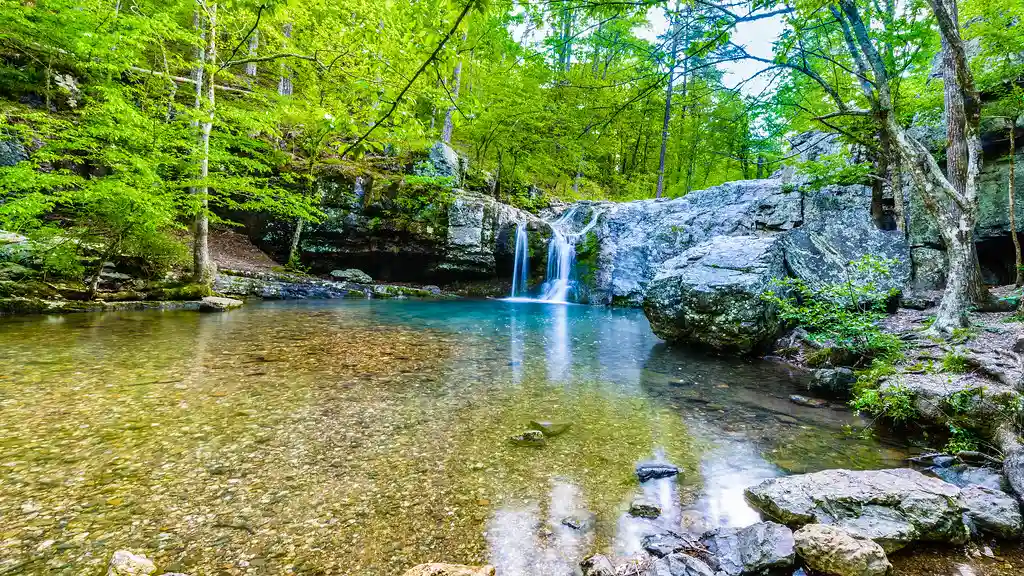
Lake Catherine State Park holds a special place in my heart as one of Arkansas’s most enjoyable lakeside escapes. Located just outside Hot Springs, this 2,000-acre park wraps around its namesake reservoir, where crystal-clear waters invite visitors to fish, swim, and boat during the warmer months. The park’s network of hiking trails winds through dense forest and along rocky shores, leading to hidden waterfalls and quiet coves perfect for afternoon picnics. It’s not just a summer destination – the rustic cabins and camping spots make it an ideal year-round getaway for anyone looking to trade city life for a few days of peace by the water. Whether you’re casting a line at dawn or watching the sunset from your cabin’s deck, Lake Catherine offers that simple, pure outdoor experience that’s getting harder to find these days.
Pea Ridge National Military Park
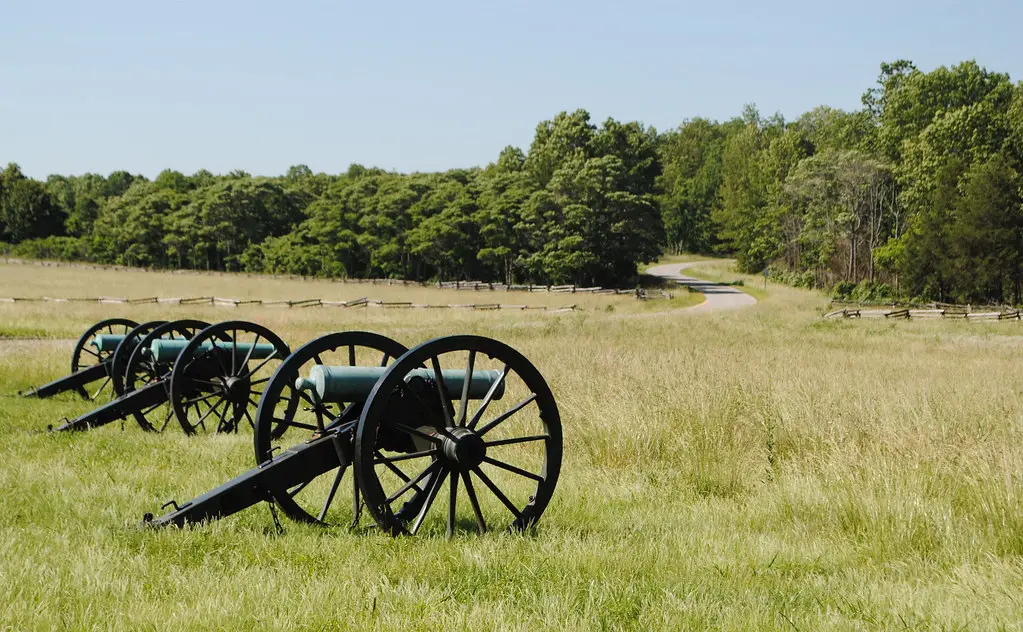
History buffs and Civil War enthusiasts visit Pea Ridge National Military Park to explore one of the most well-preserved battlefields in America, but this 4,300-acre site offers much more than just military history. The rolling hills and forests of northwest Arkansas create a peaceful backdrop where visitors can hike miles of trails, spot local wildlife, and learn about the pivotal 1862 battle that helped keep Missouri in Union control. During spring and fall, ranger-led programs bring the site’s history to life through demonstrations and talks, but the self-guided driving tour and hiking paths make for an educational experience any time of year.
Mammoth Spring State Park
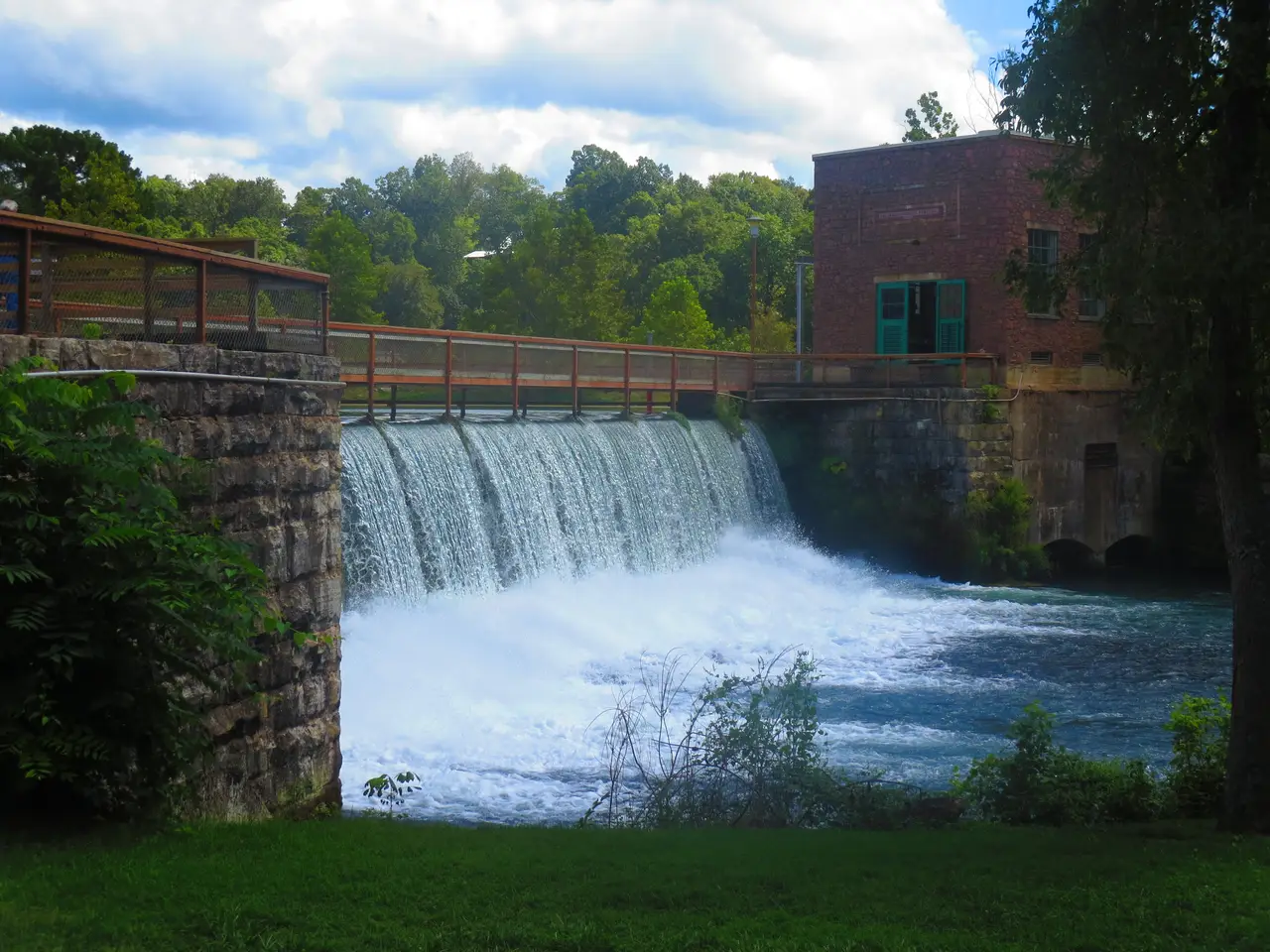
I always recommend nature lovers check out Mammoth Spring State Park in northern Arkansas. Located along the Missouri border, this 62-acre park features one of the largest natural springs in the United States, producing an impressive 9.78 million gallons of water per hour that feeds into the Spring River. Visitors can explore the restored 1886 train depot, stroll across the dam, or learn about the area’s rich history at the visitor center.
Cool Fact:
Did you know that Mammoth Spring pumps out an incredible 9.78 million gallons of water every hour, making it one of the largest natural springs in the United States? The spring maintains a constant temperature of 58 degrees Fahrenheit year-round, creating a unique ecosystem that attracts both nature enthusiasts and curious visitors looking to witness this natural wonder in action.
Lost Valley Trail, Boxley
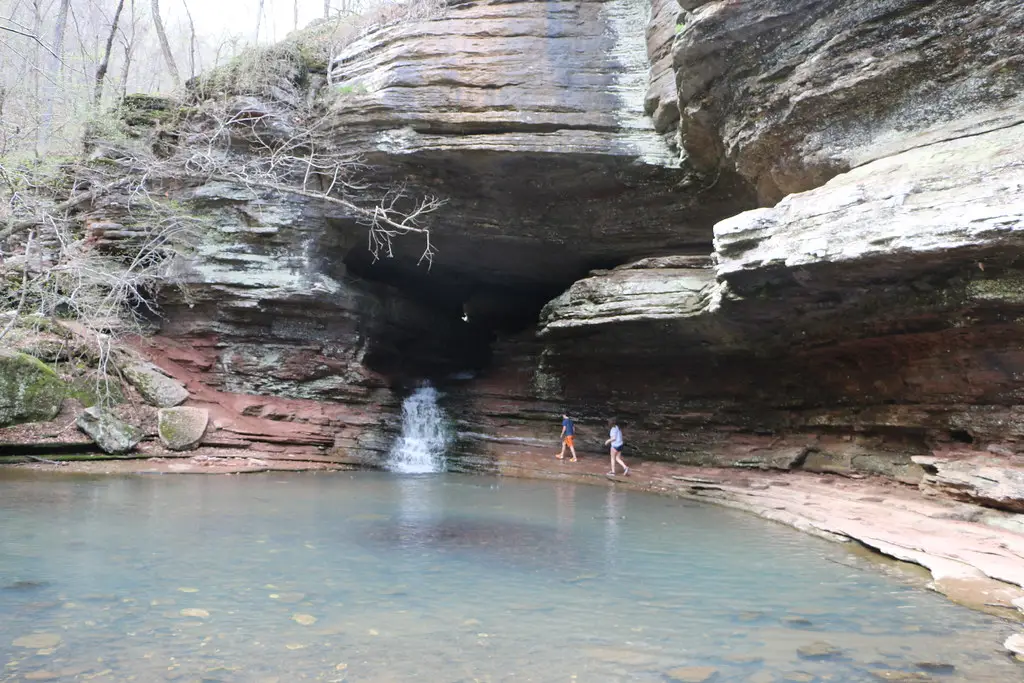
Just 45 minutes south of Rogers, Arkansas lies the Lost Valley Trail, a hidden gem tucked away in the Ozark Mountains. Like many trails in the Natural State, it features rocky bluffs and dense forest, but what sets this path apart is its collection of natural wonders packed into a relatively short 2.3-mile round trip. As you follow the well-marked trail, you’ll discover natural bridges, waterfalls cascading into pools, and caves that tell stories of the region’s ancient past. The area was once home to Native American settlements, and if you look closely at the cave walls, you might spot traces of their presence. Because of its gentle grade and variety of attractions, the trail draws both casual walkers and dedicated hikers, making it a popular spot for families looking to experience Arkansas’s natural beauty without committing to a long trek.
Historic Downtown Eureka Springs
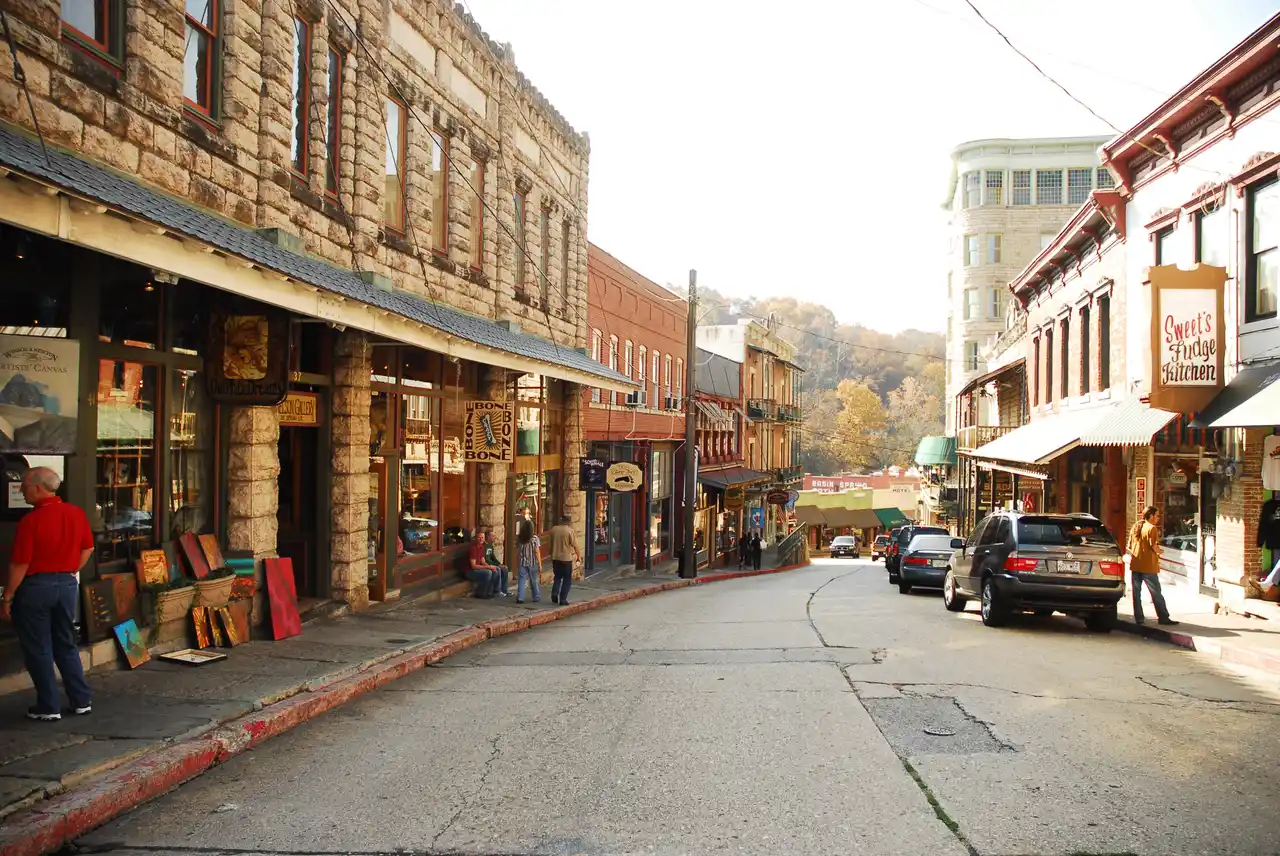
Tucked away in the Ozark Mountains of northern Arkansas lies the quirky town of Eureka Springs. Like many historic districts in America, it has old buildings and local shops, but there’s something different about this place – it feels like you’ve stepped into a Victorian-era postcard. Just look at the winding streets that climb up and down the hillsides, lined with preserved 19th-century buildings that seem to defy gravity on their steep perches. Because of the town’s reputation for healing springs in the late 1800s, wealthy visitors flocked here seeking cures, leaving behind a legacy of grand hotels and ornate architecture. Today, you’ll find independent art galleries, family-owned restaurants, and small boutiques filling these historic structures, while the natural springs that made the town famous still bubble up throughout downtown.

